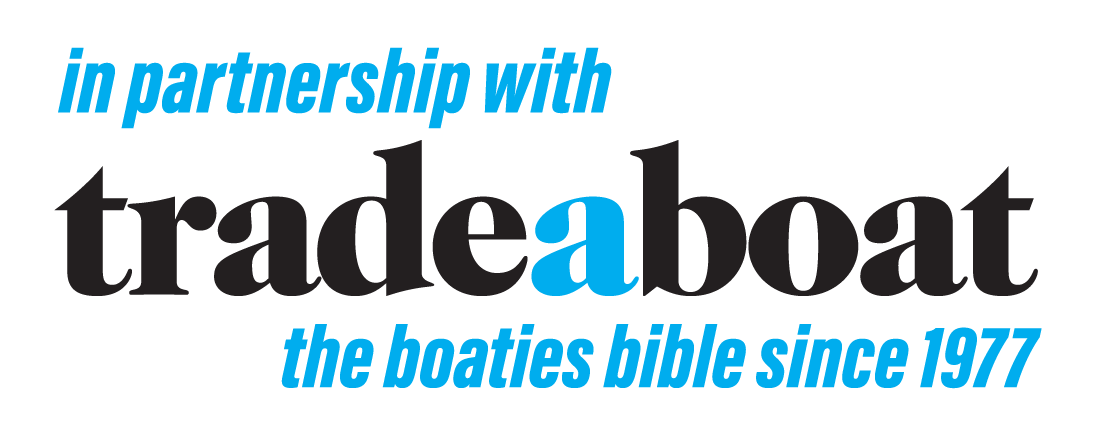
Honda BFP60 Power Thrust Outboard Engine Review
On a recent trip to Pipeclay Creek at the western end of NSW’s Port Stephens, Honda Marine’s Ross Taylor, former TrailerBoat Editor Barry Ashenhurst and I put in our Stessl 4.9m runabout for a bit of testing, throwing the boat through more than a few tight turns at full throttle. The plan was to compare a Honda BFP60 Power Thrust outboard motor combo with the standard model, and, to be honest, we found the performance of the standard Honda BF60 to be a little lackluster. But not so the Power Thrust version.
With Ross and Barry hanging on for their lives, I trimmed in the outboard leg, spun the steering wheel, and slammed down the throttle lever. The hull turned in a few boat lengths, right over on its side, while the big-bladed prop refused to let go. Similarly, Barry was thrown hard against the transom coaming while accelerating hard out of the hole, a little trick I did a few times to wake him up from enjoying the summer sun. No wonder he constantly ribs me.
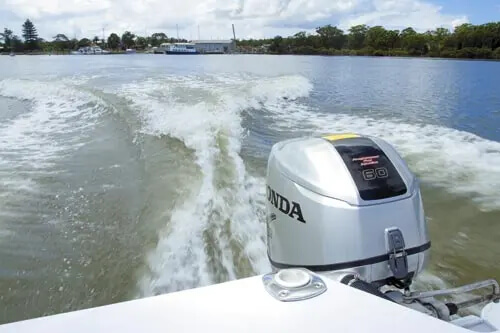
60hp Honda Outboards Compared
The concept of mating an outboard with the lower unit of a more powerful engine is not new. Mercury does it with its F60 and Big Foot F60, and Yamaha with its standard F60C and deep-ratio FT60D. However, these differ from Honda’s BF60 in that they have four-cylinder engines that develop more bottom-end torque, so performance differences between the gear ratios are not so marked, even though variation in ratios is bigger.
Honda makes do with a slightly bigger piston displacement three-cylinder engine, which, although more fuel efficient (three big cylinders will always use less fuel than four smaller ones), has less torque down low. So while gear ratio variations of 2.8:1 versus 2.33:1 might seem small, swinging a bigger diameter and pitch prop at lower revs makes all the difference.
The Honda BFP60, or Power Thrust, utilises the same lower unit as the BF75 / 90, enabling engine torque to be converted to prop thrust more efficiently, to a point. The trade-offs are slower WOT speeds and more extended periods of times to reach WOT once planing. However, unlike the standard BF60, which is suited to hulls of less than 4.8m, the BFP60 is a viable alternative to a BF75 on hulls up to 5.2m.
Sure, it lacks the grunt of the four-cylinder Honda BF75, which also has 50 percent greater piston displacement, but its 27 percent less weight masks these differences.
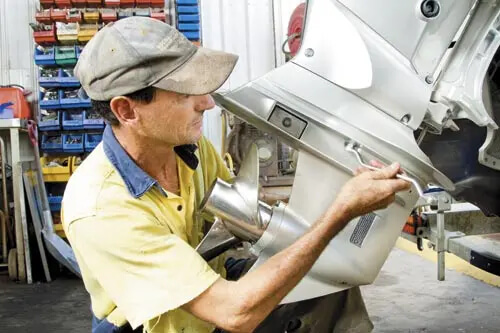
Honda vs Honda
Apart from fitting a Honda BF75 / 90 lower unit, the Honda BFP60 is the same as its standard BF60 counterpart. The 998cc SOHC powerhead develops 59.2 hp at 5500 rpm, with a WOT rev range of 5000-6000, and has BLAST (Boosted Low Speed Torque) and “ECOmo” technology to improve holeshot performance and reduce mid-range fuel consumption. No doubt regular readers enjoyed my insomnia-killing description of these technologies in the initial review of the BF60 (TrailerBoat #292, March 2013), so we won’t go there again.
It’s more important to know how many electronic toys the alternator can power, and the Honda BFP60’s higher 22A output means anglers can carry even more onboard. However, the new engine’s dry weight leaps from the BF60’s 110kg to 119kg, so it’s up there with Mercury’s F60 Big Foot and FT60D models.
Servicing intervals and oil requirements are the same as the Honda BF60, and the OEDA three-star-rated BFP60 has a five-year recreational-usage warranty.
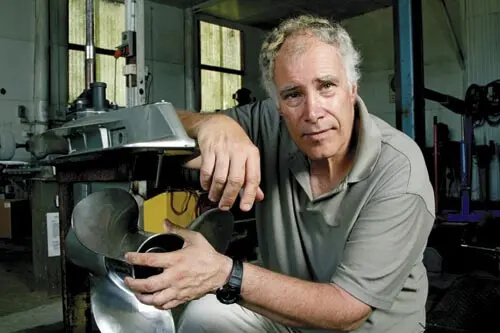
To avoid the expense and timing of running in two separate engines, Ross arranged for Phillip Bailey of Cove Marine to swap the lower units after testing the Honda BF60. We also varied the hull loading between three and four adults by carrying an additional 80kg of cement bags aboard, ensuring they didn’t get wet.
With its three-cylinder powerhead, the BF60 lived up to the previous testing, but not so much when transformed into a BFP60, which seemed to be better balanced due to the load of the big-blade prop. The standard BF60 prop was a 15-inch pitch Solas three-bladed stainless steel model, but for the BFP60 lower unit, Phillip fitted a 14-inch Solas three-blade, which more than made up for its fat blades and larger diameter despite having a smaller pitch.
As before, the engine started instantly hot or cold, with no oil smoke appearing at any time. Even though the big-blade prop imposed more load on the dog clutch, there was no greater “clunk” when engaging forward or reverse.
Low-speed handling was significantly better with the BFP60. Not only could the boat be brought up to a jetty and reverse engaged without opening the throttle to stop the boat, but when tilting the leg in shallow water more of the prop could be exposed when backing out from a beach.
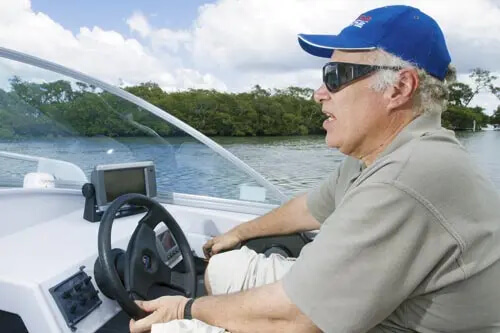
Though faster out of the hole due to the effective conversion of engine torque to prop thrust, the lower unit's drag prevented the Honda BFP60 from reaching WOT as fast as the BF60 lower unit. But that was only with the three-adult load. When the cement bags were added, holeshot and WOT times were much quicker than the BF60, and the hull’s ability to maintain a slower planing speed was a real bonus, especially useful for covering big distances in rough water.
Letting the engine reach higher revs did contribute to the performance difference because most four-stroke outboards like to reach the upper end of the recommended WOT rev ranges.
Since mechanical steering was fitted, torque steer from the big prop was no greater than the BF60’s. However, if you value keeping your arms the same length after a day afloat, I still wouldn’t opt for a tiller-steer version of the BFP60 because, given it has the same gear ratio as Yamaha’s Enduro 60, it would make a day out more of a gym experience than enjoyable angling.
As expected, noise levels were no greater than the Honda BF60 across the entire rpm range.
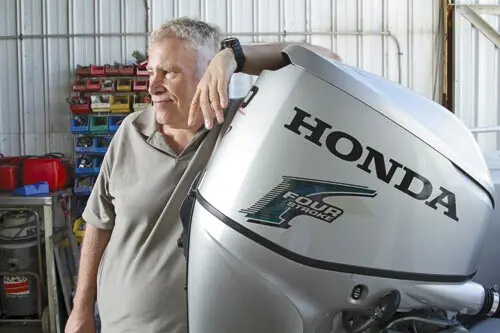
Our Verdict
I still have no problem with the standard BF60, and it’s definitely the way to go for smaller, lighter, tiller-steer tinnies. Mounting it on a side console Barra boat around 4.5m would be a lot of fun because, despite its four-stroke multi-valve complexity, you just want to drive it hard.
But if you plan on taking your family out for a day on a tinnie up to around 5.2m, then it’s worth spending a bit extra and investing in the BFP60. It really is a viable alternative to a BF75, and though top-end won’t be as blistering, the greater trolling and mid-range fuel efficiency, not to mention the more cost-effective initial outlay, will make this engine very attractive.
Special thanks to Ross Taylor of Vic’s Honda Marine and Phillip Bailey of NSW’s Cove Marine for their help with our review.
Performance Summary
Honda BF60 with three adults, 15in prop, 900kg
2.7kts (5kmh) @ 800rpm (trolling) – 0.6L/h
3.2kts (6kmh) @ 1000rpm – 1.2L/h
5.4kts (10kmh) @ 2000rpm – 2.7L/h
5.9kts (11kmh) @ 2500rpm – 4.2L/h
11.3kts (21kmh) @ 3200rpm (min plane) – 6.3L/h
20.2kts (37.8kmh) @ 4000rpm (cruise) – 8.4L/h
25.9kts (48kmh) @ 5000rpm (max cruise) – 16.6L/h
29.1kts (54kmh) @ 5500rpm (WOT) – 19.8L/h
Time to plane: four seconds
Time to reach WOT: 12 seconds
Honda BF60 with four adults, 15in prop, 980kg
2.7kts (5kmh) @ 800rpm (trolling) – 0.6L/h
3.2kts (6kmh) @ 1000rpm – 1.2L/h
5.1kts (9.5kmh) @ 2000rpm – 2.7L/h
5.8kts (10.8kmh) @ 2500rpm – 4.2L/h
13.5kts (25kmh) @ 3500rpm (min plane) – 7.5L/h
17.8kts (33kmh) @ 4000rpm (cruise) – 9.5L/h
25.9kts (48kmh) @ 5000rpm (max cruise) – 15L/h28.3kts (52.5kmh) @ 5400rpm (WOT) – 19.3L/h
Time to plane: five seconds
Time to reach WOT: 21 seconds
Honda BFP60 with three adults, 14in prop, 910kg
2.4kts (4.5kmh) @ 800rpm (trolling) – 0.6L/h
3kts (5.5kmh) @ 1000rpm – 1L/h
5.1kts (9.5kmh) @ 2000rpm – 2.6L/h
5.4kts (10kmh) @ 2500rpm- 3.6L/h
9.4kts (17.5kmh) @ 3000rpm (min plane) – 5.7L/h
16.7kts (31kmh) @ 4000rpm (cruise) – 7.4L/h
24kts (44.5kmh) @ 5000rpm (max cruise) – 13.5L/h
28kts (52kmh) @ 6000rpm (WOT) – 20.6L/h
Time to plane: three seconds
Time to reach WOT: 14 seconds
Honda BFP60 with four adults, 14in prop, 990kg
2.4kts (4.5kmh) @ 800rpm (trolling) – 0.6L/h
2.7kts (5kmh) @ 1000rpm – 0.9L/h
5.4kts (10kmh) @ 2000rpm – 2.7L/h|
5.7kts (10.5kmh) @ 2500rpm – 3.6L/h
11.9kts (22kmh) @ 3500rpm (min plane) – 7.5L/h
16.7kts (31kmh) @ 4000rpm (cruise) – 7.8L/h
23.2kts (43kmh) @ 5000rpm (max cruise) – 14.1L/h
26.7kts (49.5kmh) @ 5700rpm (WOT) – 19.9L/h
Time to plane: four seconds
Time to reach WOT: 15 seconds.
The Four-Stroke Outboard Motor Competition
|
OUTBOARD MOTOR |
MERCURY F60 BIG FOOT |
YAMAHA FT60D |
|
Weight |
118kg |
121kg |
|
Cyl / HP / Rpm |
4 / 59.9 / 5750 |
4 / 59 / 5500 |
|
Displacement |
996cc |
995cc |
|
Warranty |
5yrs |
4yrs |
|
OEDA stars |
OEDA Stars 3 |
3 |
Originally published in TrailerBoat #294, April / May 2013.
Ready to Set Sail?
Find your dream boat online at Only Boats! We have great deals on boats for sale, including used and new boats. You can also check out our used boat buying guide.
If you're upgrading or planning to sell your boat, why not explore our expert guide on how to improve boat resale value. If you're planning to attend a boat show soon, we've also put together a detailed boat show buying guide that's perfect for first time buyers.
Smooth sailing starts with the right boat. We’re here to help you find it!
This article was written by Andrew Norton and photos provided by Barry Ashenhurst and John Wheatley and previously appeared at TradeaBoat.com.au, now powered by Only Boats.
Getting boat finance sorted shouldn't be the hard part of boat ownership. Credit One has helped thousands of Australians get on the water, earning a reputation as Australia's best-reviewed finance broker with 3,000+ glowing Google reviews to show for it. See what customers have experienced by reading their Credit One reviews, or use the loan repayment calculator to work through your options.
